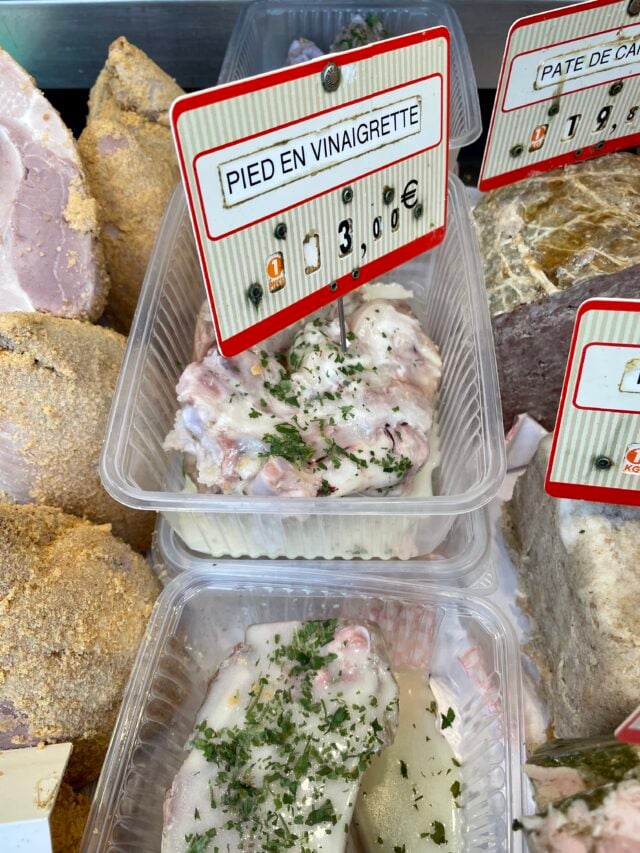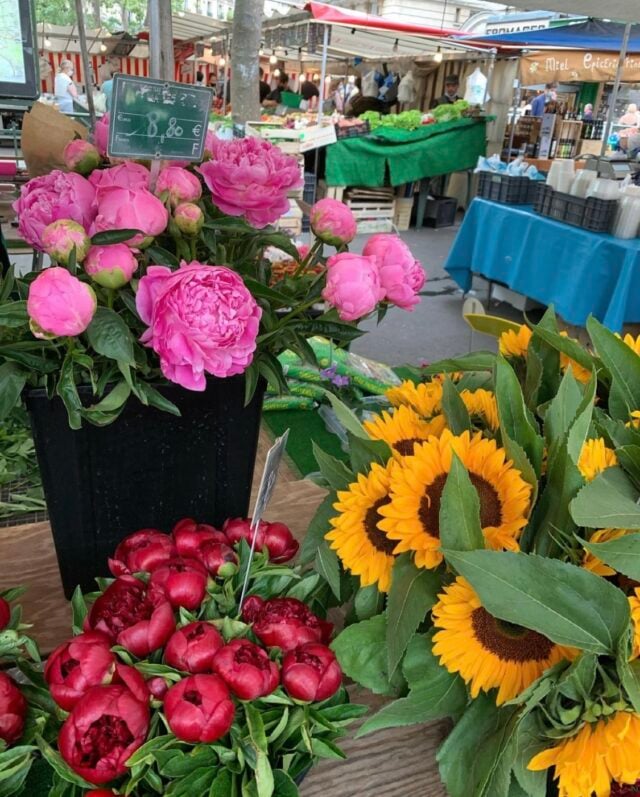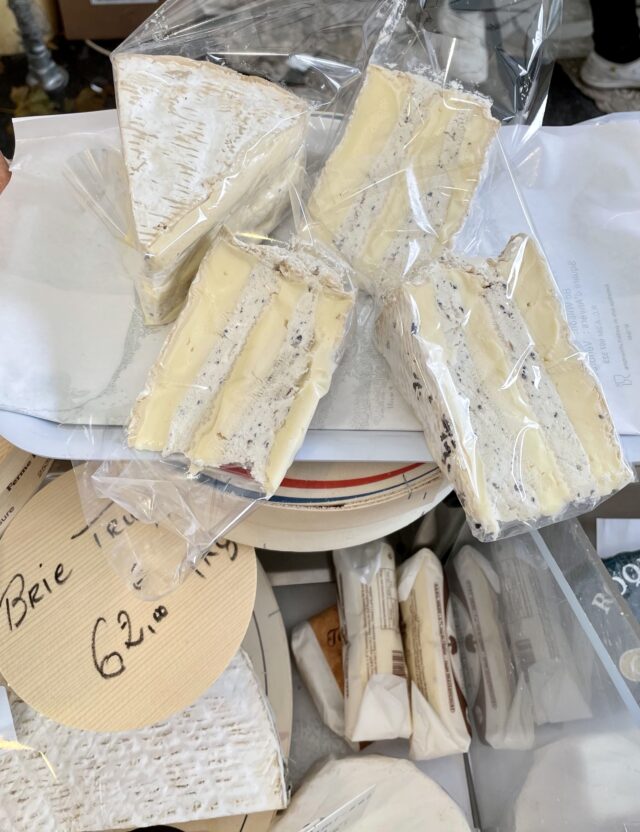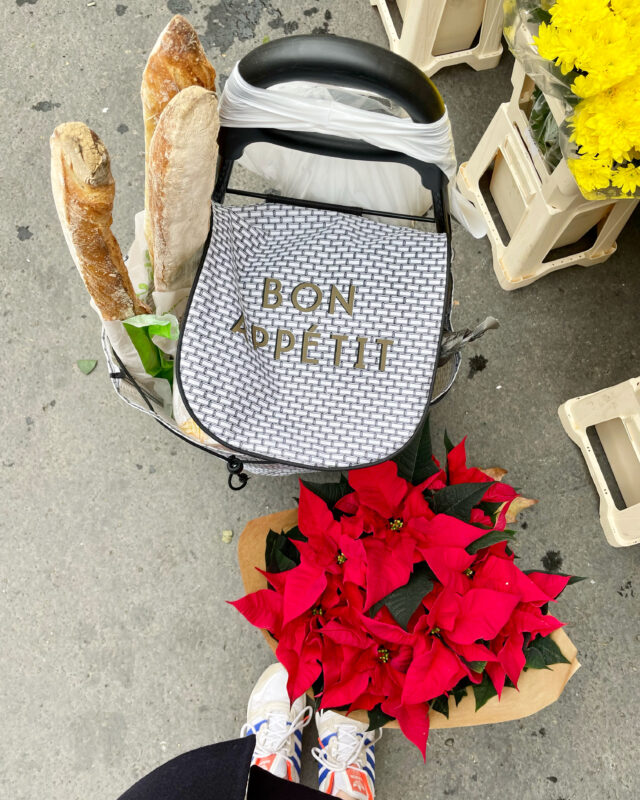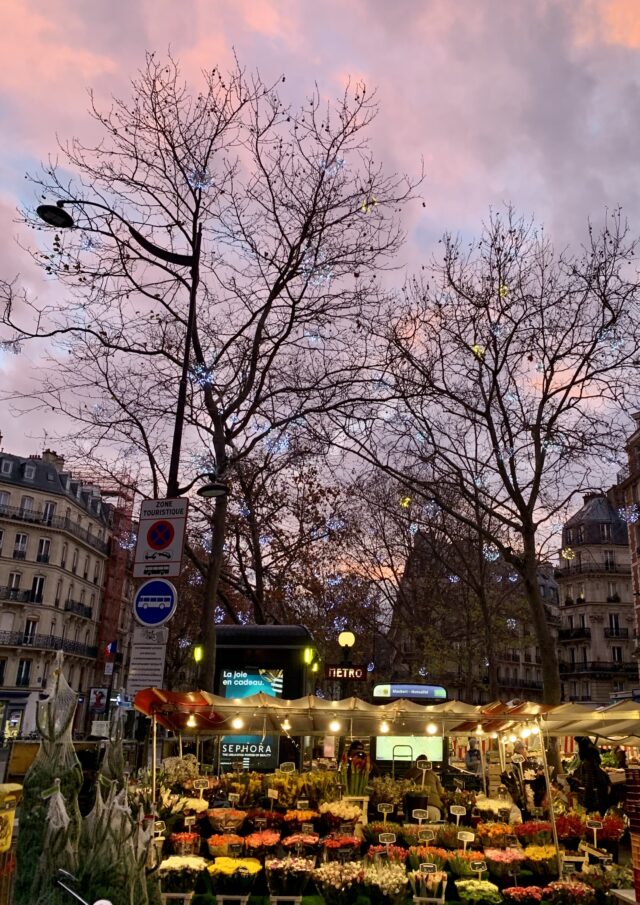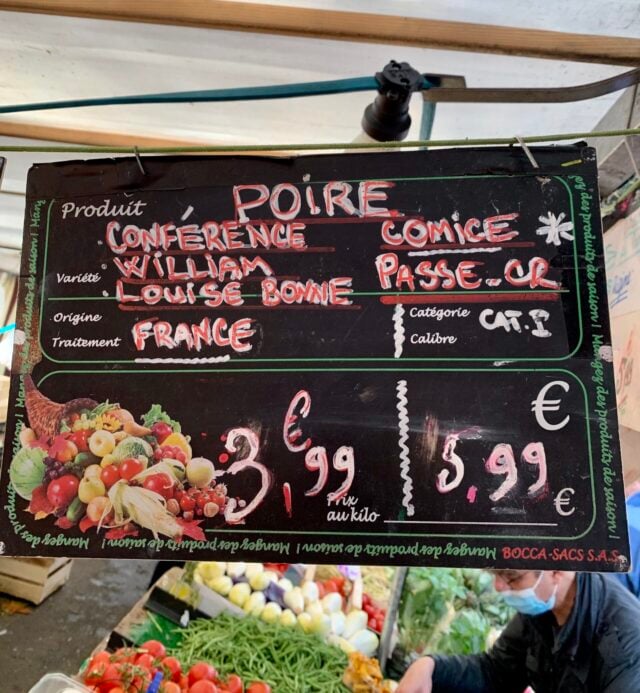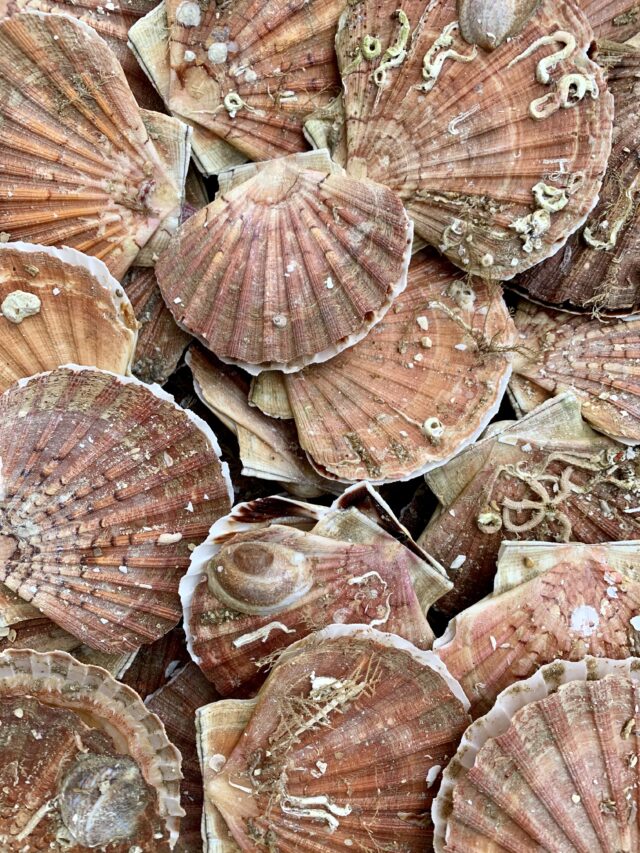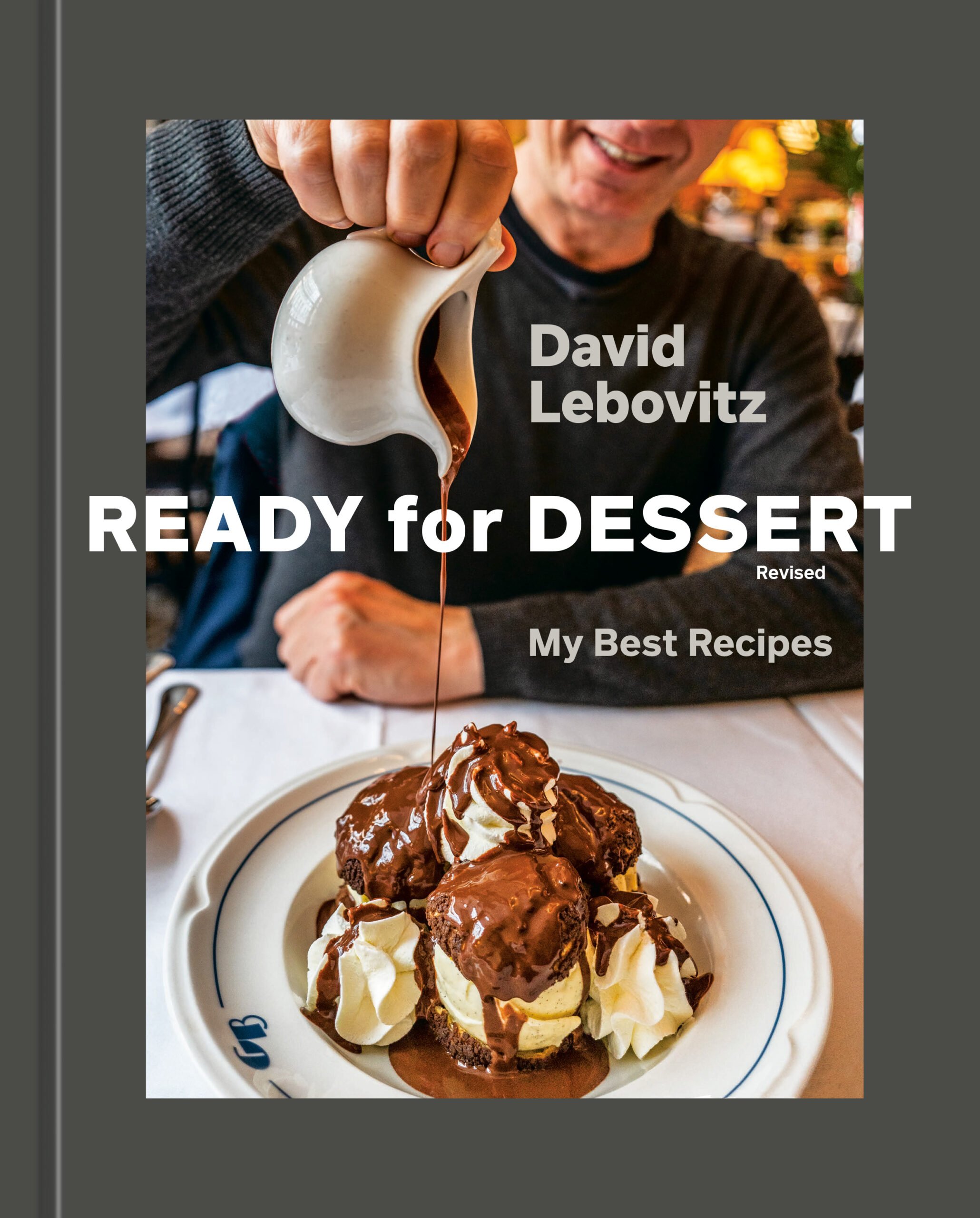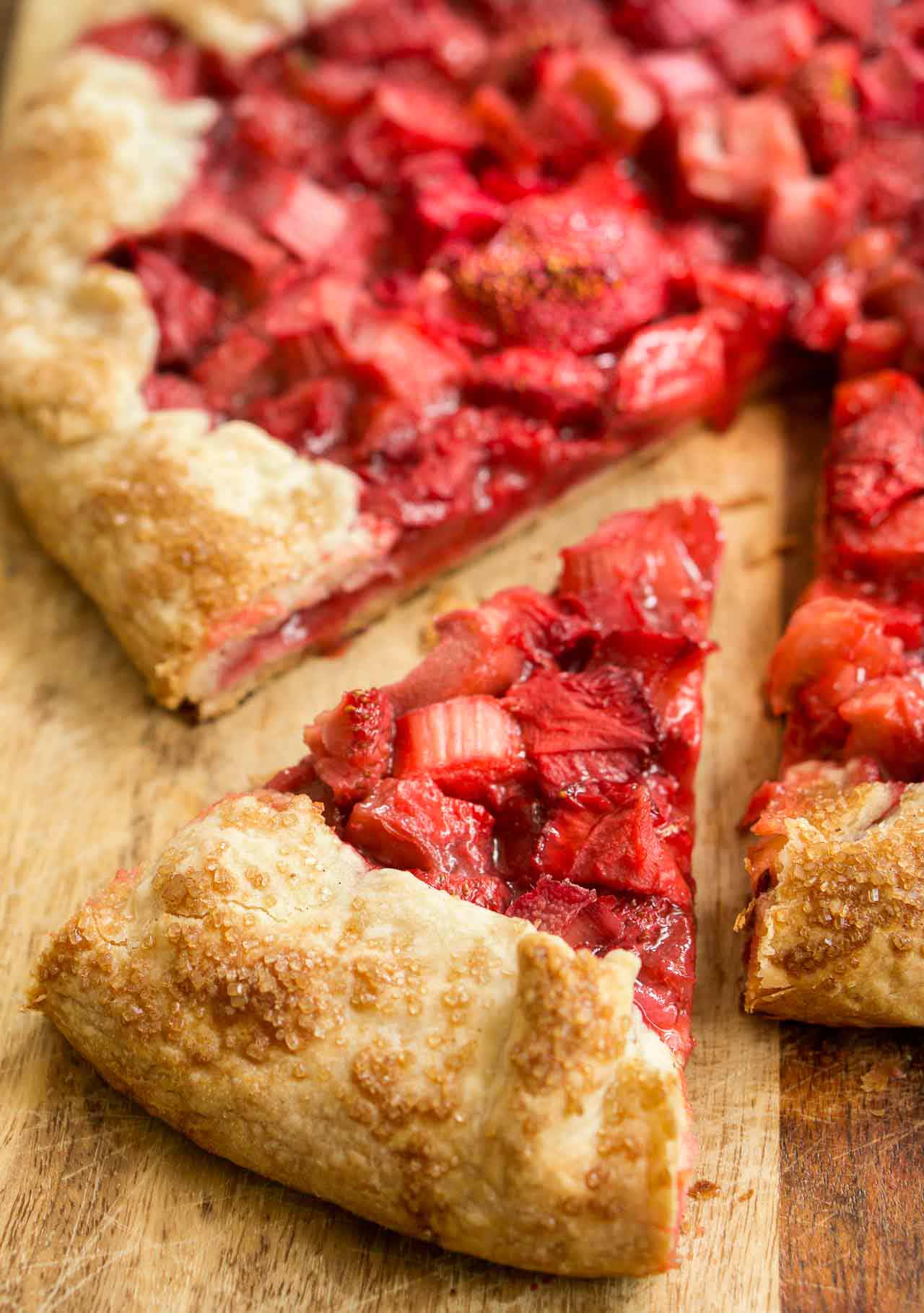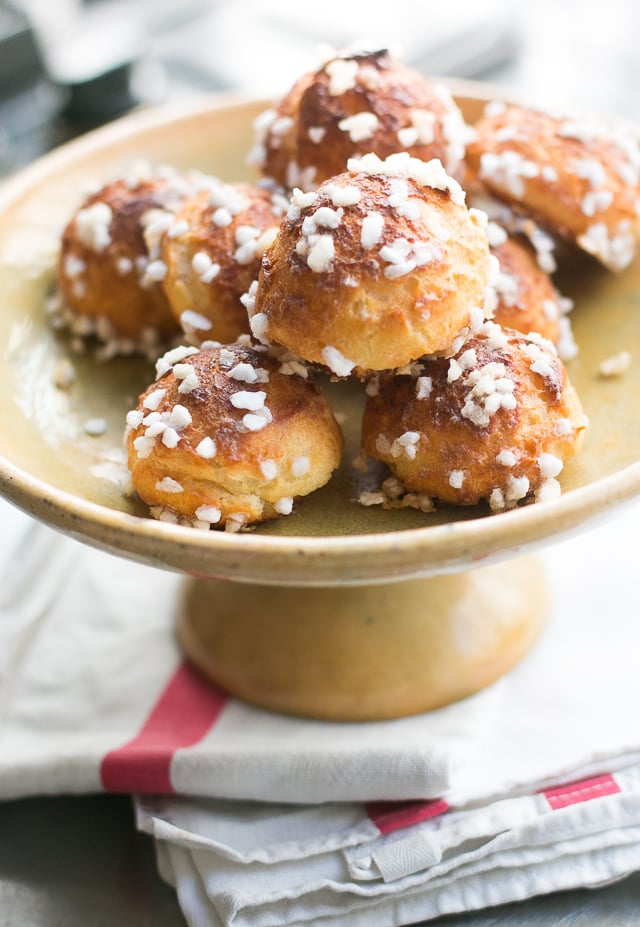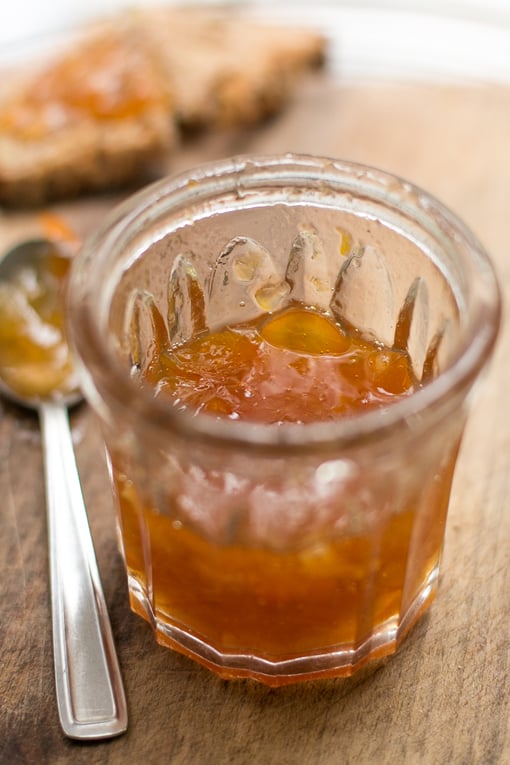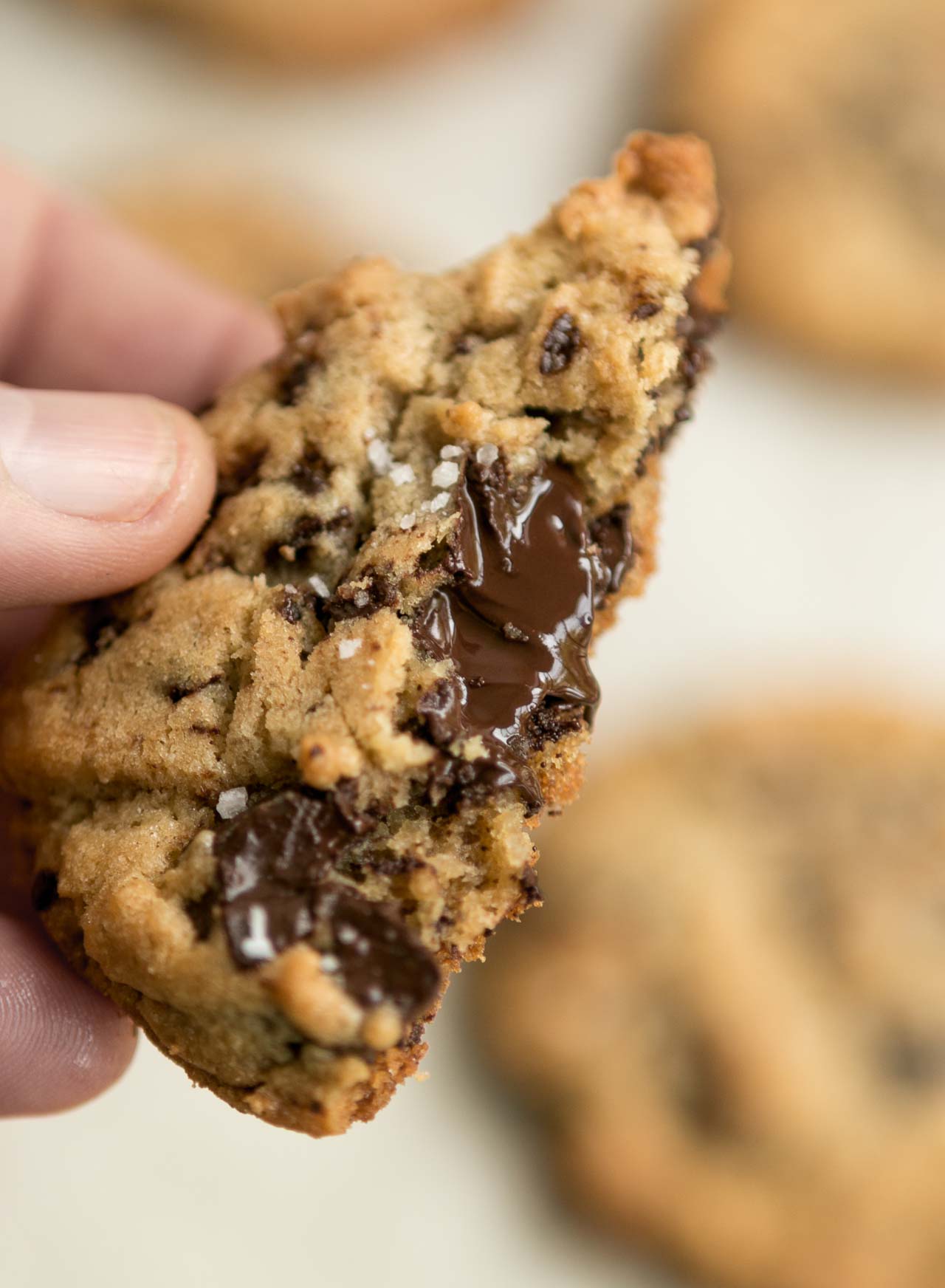12 useful tips for your next visit to a French food market
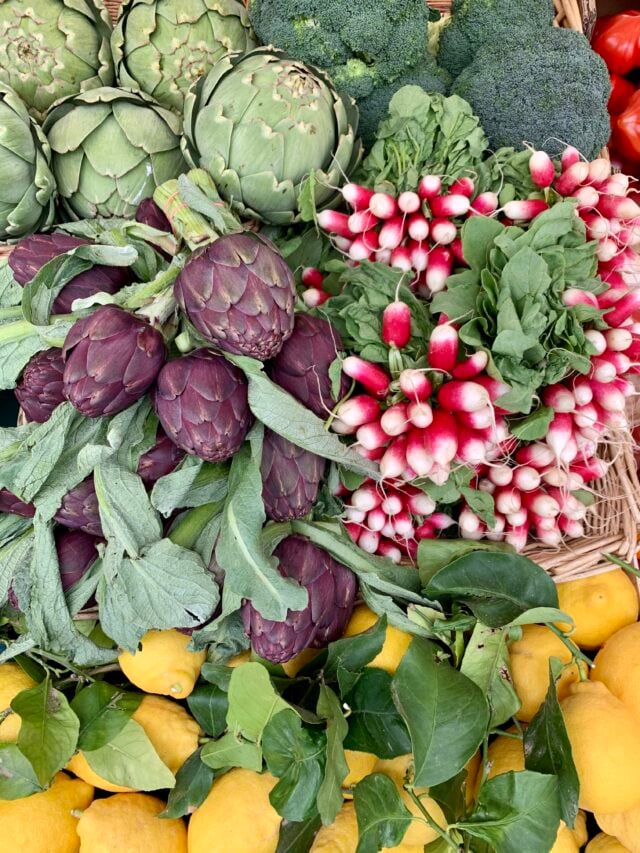
Hello, Emily here – sharing my top tips for your next visit to a French food market. Hope they come in helpful!
– Emily
Whenever I’m in a new city, there’s nothing I enjoy more than eating; trying out restaurant recommendations, people watching in a cafe, savoring a refreshing afternoon ice cream or a trip to the local supermarket all bring me great joy. But most of all I love visiting the local markets to experience new flavors, and daydream about what my life would be like if I lived in that part of the world. Ironically, when I moved to Paris it took me at least six months before I even set foot in a market. I was so wrapped up in finding a job, learning French, and going from zero responsibilities to becoming part of a family (my husband was widowed and I moved in with him and his daughter) that I was too busy for anything except a weekly dash around our local supermarket for the basics.
As things eventually calmed down, I found my rhythm and I became a regular at our local outdoor market (Marche Maubert – about a 10 minute walk from our apartment, with a great selection of vendors and a really nice atmosphere), where seeing the same familiar faces each visit is a happy way to start the weekend, reminding me that every day in Paris lays another brick in the foundation of my life here. Now (almost 6 years later) I leave the house most Saturday mornings with my little chariot de marché (market trolley) to do our weekly shop. It’s not really the local custom but I pick up a takeaway coffee on-route and arrive with a vague idea of what I feel like cooking that week, which quickly becomes a solid plan as I see what’s on offer.
At our local market, my routine goes something like this: Fruit and vegetables first, from producteurs if I’ve remembered cash, and resellers if I haven’t. I like to do them first so my heaviest produce is at the bottom of the trolley. I pile my cart high with a mix of colorful fruit and vegetables so the kids get a variety of vitamins (is there any science behind that or is it just an old wives tale?) along with fresh herbs, and I always pick up onions, celery and carrots to make mirepoix (the finely diced mix that forms the base of many sauces and stocks).
The butcher stall is my favorite stop, where I’m warmly welcomed by the owner who is planning a trip to Australia and loves to chat with me about it, big smiles all round. I regularly pick up a rotisserie chicken with some of their amazing potatoes, roasted in chicken fat until they’re translucent and perfect. My husband says they’re too salty but he always takes seconds.
We go through quite a bit of cheese each week (I calculated we spend the same as a child’s return flight ticket to Australia annually) but in the words of Marie Kondo it “sparks joy”. A tranche (slice) of 24-month aged Comté here, a morceau (piece) of tomme wrapped in dried alpine flowers there, along with organic milk and fresh eggs. I also recently made frozen yogurt with one of the thick and creamy ones they have on offer (mixed with a bit of sugar and milk), which was a simple dessert that the whole family loved.
There’s no shortage of bakeries in Paris but after the one on our street closed a few years ago we never found a new boulangerie to pass by daily, until I discovered Maison d’Isabelle, who were awarded best croissant in Paris in 2018. I stop by nearly every weekend to pick up still warm baguettes – one for the table and 3 for the freezer (people always ask how I store them – break them in half and throw them in the freezer, in the paper bag they came in, as soon as you get home, then pull a half out when you start cooking dinner and it defrosts perfectly on the table – or if you forget, a 30 second zap in “Chef Mike” our micro-onde does the trick). We also get sweet treats for after lunch on Saturdays, which I look forward to all week. Our order is a perfectly balanced tarte citron-meringue for me, glossy chocolate eclairs for the kids, and the weekly special for my husband. They’ve also won prizes for their tarte fine aux pommes and I highly recommend it.
My last stop is the florist who greets me enthusiastically as I take my time deciding which petit bouquet will come home with me. “C’est pour la maison?” (it’s for you?) he checks, before wrapping the stems up simply in brown paper for the journey home. He always has a lovely selection of potted plants but stops me before I even pick them up, reminding me “c’est une plante d’extérieur” (it’s an outdoor plant), because he knows I have no terrace. Sometimes he relents and lets me buy one if I promise to leave it in a sunny spot with the windows open.
When my usual circuit of the market is done, I trundle home with my packed trolley, ready to jump back into the everyday chaos that is a family of 5 plus a dog. Because I usually only visit once a week (although it is there Saturday, Tuesday and Thursday) as soon as I’m home I pop some of the meat into the freezer to keep it fresh for when I want to use it, and prepare the vegetables where possible because if I don’t do it straight away, they will sit in the fridge begging for attention until they go limp. My simple prep routine is as follows: radishes, leeks and celery get trimmed and washed. Beetroot gets wrapped up in foil to steam in the oven the next time I turn it on. Sweet potato, pumpkin and butternut squash get peeled and chopped, along with cauliflower and anything that feels like ‘effort’ to prepare when there are tired children under my feet, hungry for their dinner. Everything sits in bowls in the fridge ready to roast in the oven or simmer in a pan for easy midweek meals. Potatoes, onions, shallots, garlic and carrots go into their drawer in the fridge, still dirty, ready to be called up when needed, and fruit gets rinsed and goes into the big bowl on the bench to brighten up our white kitchen. Then we sit back and look at the beautiful flowers while enjoying our lunch, finishing up with French cheeses and a pastry from the bakery.
Shopping at a French food market is one of life’s little pleasures, but it can sometimes be intimidating (for the French and foreigners alike) as stallholders don’t hold back on letting you know when they are displeased. I cringe thinking back at the times I was scolded while I clumsily navigated my way through the stalls so I’m sharing some tips and phrases that might come in handy next time you spend a morning meandering and tasting your way through the sea of stalls and (often stern) stallholders.
1. Bring a bag, basket or trolley with you
The thin plastic bags the vendors have are notorious for splitting (and cutting off circulation to your fingers) and it’s better for the planet. I love our trusty trolley and throw everything in there, dirt and all. A separate basket or tote bag for more delicate things like a botte (bunch) of herbs, flowers and eggs is also a good idea. A lot of markets now have bins set up for people to bring their compost (in biodegradable plastic or brown paper bags) so if you’re going to the market and want to cut down on waste then you can take that with you as well.
2. Make sure you have some cash on hand
Most places now accept bank cards but it is not unusual for there to be a minimum spend, or to find out it’s cash only. If you have coins or small notes with you, even better, as no one will be happy to take a €50 note if they can avoid it…even if the price is €49.99.
3. Visit early
Most markets run from 8am-1pm but don’t be surprised if you arrive at midday to find some of the stalls already empty. Our closest local market, at Place Maubert (in the 5th arrondissement on Tuesday, Thursday and Saturday mornings) is quite busy on the weekends and lines can appear from 9.30am at the most popular stalls. If you’re looking for a market to try, it’s a good size, not overwhelming, but with enough vendors that you can usually find what you’re looking for. It’s also happily set in front of a row of permanent specialist food stores – award winning bakery Maison d’Isabelle, Fromagerie Laurent Dubois (one of the chicest cheese shops in Paris), a newly renovated butcher with a wide selection, a small fishmonger, a greengrocer with beautiful displays of fruit and vegetables and, most importantly, a helpful caviste (wine merchant). Around the corner there is also an Aux Merveilleux de Fred which sells perfect clouds of meringue, wrapped in a layer of whipped cream and rolled in chocolate shavings, which I highly recommend you try if you ever get the chance.
4. You will need to use math
Prices are usually per piece or per kilo (2.2lbs) but occasionally they are per 100g or 500g which can lead to some costly mistakes. I still frequently have near misses on prices and occasionally order something too early in the season when it’s still very expensive (for example I almost paid €20 for a bunch of purple asparagus one weekend but realised just in time). Sometimes prices aren’t displayed properly or can be confusing so don’t be shy to ask c’est combien? (how much is it?) and don’t feel pressured to buy something you are not interested in or forced to buy more than you wanted (something that used to happen to me and I see happen to visitors and tourists a lot). Je voudrais (I would like), une poignée (a handful), un peu plus (a bit more), une barquette (a little paper or plastic basket that berries usually come in), un/une pièce (a piece), une dizaine (around 10), une douzaine (12) and la moitié (half) are all useful phrases. You can also shop by weight asking for cent grammes, deux cent grammes (100g, 200g) etc. Environ (approximately) is a great phrase but usually leaves you having to ask for un peu moins (a bit less).
5. Don’t touch the produce
As enticing as it may be, you’re generally not usually allowed to pick your own produce, especially now with Covid restrictions in place (but this changes from market to market so watch and see what the regulars are up to, bearing in mind that they may be held to different rules. Every piece of produce has to be discussed at length so the stallholder can make sure you get exactly what you’re looking for. “Are the peaches pour aujourd’hui (for today) or demain (tomorrow) Madame. Are the apples for apple tart or eating raw? Which salad do your kids prefer – this one might be a bit bitter”. This process can feel tedious at first, especially when you’re in a rush, but everyone patiently waits in line, knowing they will have the same level of attention when it’s their turn, and I’ve come to appreciate it. Plan enough time for your market visit so you can enjoy the experience, rather than getting stressed as lunch time creeps closer and closer and your stomach starts to rumble.
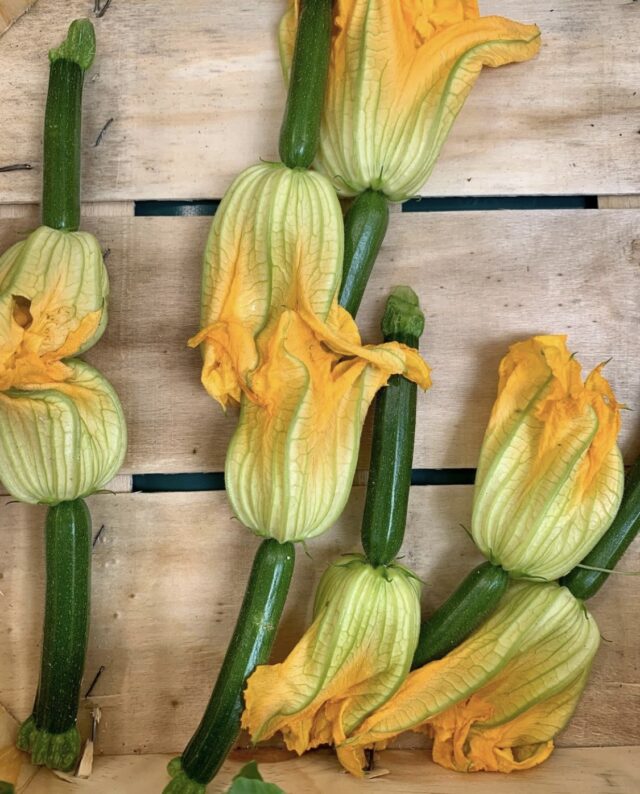
6. When it’s your turn, start off with a happy “Bonjour”
A guaranteed way to improve your market experience, these 2 syllables are incredibly important in France and you will offend almost anyone if you don’t take the time to greet them at the start of all interactions. This goes for everywhere, not just the market – say it in shops, restaurants, on the bus, throw it around with abandon. S’il vous plaît (please) is also key, as is merci (thank you).
7. Enjoy samples if you’re lucky enough to be offered them.
There’s no obligation to buy. At best you might discover something new that you like (this year I tried mini mangoes and raw almonds for the first time) and if you don’t like it then at worst you got a free nibble. People are proud of their products so be gracious, even if it’s not your cup of tea.
8. Buy things when they’re in season and they’ll taste their best
I’ve come a long way from the bland “two-for-the-price of one” grocery store deals that dominated my routine when I lived in London and shopped at big chain supermarkets, where powdery apples, sour strawberries and rock hard mangoes were on special all year. Now I anticipate the arrival of blood oranges, white asparagus, wild garlic, the first gariguette strawberries, salsify, and even seasonal cheeses such as Mont D’or. Each season has its stars and its staples and I’ve learnt to love them all, even January, when you feel like the only fruit you can find is apples – because who doesn’t love an excuse to make a Tarte Tatin?

9. Walk around before buying
Do a lap of the market before you buy and you’ll be able to tell the difference between resellers (called négotiants), who will have bought their produce that morning at Rungis (one of the largest wholesale food markets in the world) and producteurs, local farmers who are selling their produce directly, dirt and all. Both have their advantages – resellers will have a bigger range, more uniform produce and imported products and the farmers have things that might have been pulled out of the ground fresh that very morning.
10. Pay attention to the signs
Each product should be labeled with a sign that will tell you where it’s from, which can help you make decisions on carbon footprint but also whether it’s in season (if it’s from France, chances are that it is). Biologique (or bio) means organic and varieté is the variety of the fruit or vegetable. If you see Cat I and Cat II everywhere, they aren’t counting cats. This lets you know the quality of the produce and the range goes from Extra (perfect, restaurant quality) Category I (has very few flaws and you will not usually notice them) while Category II is the most common and you would usually be hard pressed to find fault with it. Fruit will sometimes be sold pour la confiture (to make jam) and means you can get a good deal on a box of squishy plums or dimpled cherries.
11. Ask for help
When you order at the fishmonger you can request how you’d like your fish prepared (descaled, cleaned, fileted) and they will quickly and expertly do it for you in a few minutes. At the butcher you can ask for your meat to be deboned or cut however you like. You can also ask for help with portions, for example “moules pour quatre adultes” (mussels for 4 adults) and they will give you the right amount (although I quickly learnt that French and Australians don’t have the same idea of portion sizes – so I normally add another ‘guest’ when doing this). The cheesemonger is always ready for a suggestion on how to put together a perfect cheese plate, but perhaps don’t tell them you might eat it before dinner as French people are usually very confused by ‘cheese & wine’ as an appetizer.
12. Ask before taking photos
Some social-media savvy stallholders encourage photos and will share your image to stories the second it goes online, but many are less-than-pleased to see you snapping away and will often “jokingly” shout out “5 euros” meaning they are going to fine you for taking a pic. My rule of thumb is no photos if I’m not buying something, stay out of the way, and never hold up the line. Most people are there to do their weekly shop and while they’ll patiently wait while someone spends 20 minutes discussing the ripeness of peaches, they’ll voice their displeasure in a New York Minute if you inconvenience them with your iPhone.
Market Tours
Next time you’re here I hope you have time to pass by a local market and pick up some cheese, wine, bread and more to enjoy. You can find a list of Paris markets here and La Cuisine, Cook’n with Class and Cuisine Elegante all have market cooking classes (a tour followed by cooking lunch together). Paris by Mouth also have very popular food tours.
I’ll be offering some market and cooking tours in 2022 so please get in touch if you’re interested. Until then, come and join me on my weekly market trips over on Instagram and I would love to hear your French market stories or tips in the comments.
– Emily

